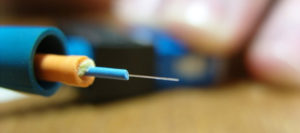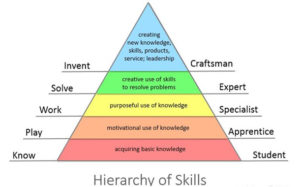Fiber optics, like any fast-growing technology, needs well-trained professionals however, very few of those are trained in technical schools currently, both in high schools and colleges, where general courses prepare them for most other theoretical aspects of fiber optics that are rarely used in on-field applications.
National Optical Fiber Network (NOFN) a government-owned company is establishing a nationwide broadband network with the objective of achieving 175 million broadband connections by the year 2017 and 600 million by the year 2020 at a minimum of 2 Mbps download speed and making available higher speeds of at least 100 Mbps on demand. Rolls and rolls of fiber-optic cable are being installed all over the country. NOFN would come in different forms depending on where users live and work. The common types of NOFN are Fiber, Fiber to the Node (FTTn), Fiber to the home (FTTh) & Fixed Wireless.

With the growth in Indian Telecom industry the demand for various professionals such as Optical fiber Technician, Telecom infrastructure designers / auditors etc. is bound to increase. Mobile operators in the wireless segment have alone generated an estimated 2.3 million jobs till now and it is estimated that the sector as a whole is likely to create about 40 lakh direct and indirect jobs over the next 5 years.
We have been doing this for years, why is it that we need skilled professionals now?
The Indian Telecom Industry probably needs the largest number of skilled personnel as contractors and installers who would build these fiber optic networks. Installers must be skilled in the process of pulling cables, splicing, terminating and then testing them. It requires more manual dexterity than other jobs, plus a basic understanding, of how the systems work. In addition, installers would need to work with specialized equipment like fusion splicers, OLTS’s and OTDR’s that require extensive knowledge of their operation and more importantly the understanding of how to interpret test results.
Installers who would install these telephone, surveillance CCTV and CATV fiber optic networks would need to do much of their work outdoors (what we call outside plant – OSP – installations) braving year-round weather. They would need to sometimes operate big machines that dig trenches and lay and/or pull cables. Outside plant (OSP) installations generally, would require more hardware. (and more knowledge of the tools and test equipment) pullers, splicers, OTDR’s and even splicing vans are the tools of the trade for OSP installers.
Another aspect to this industry segment is the premise cabling technicians, who installs cables inside buildings for computer networks, security systems and other building management systems. Computers and security networks, use lots of fiber which is installed inside buildings. Premise installers may need only a termination kit for attaching connectors and a simple test kit for their installations. Working above ceilings or in crowded telecom closets or communications rooms is the norm in this segment.
An important perspective that need not be missed in the scheme of things is Fiber to the home (FTTh) wherein technicians install fiber from local areas, directly to the home. Some use standard OSP installation practices and some install pre-terminated cables that just require plugging into the network equipment. Besides the cables, some install specialized FTTh fiber optic communications equipment, test and troubleshoot networks, wherein the requisite procedures vary from the common norm, depending on the operation scope.
Skilling requirements

Fiber optics, like any fast-growing technology, needs well-trained professionals however, very few of those are trained in technical schools currently, both in high schools and colleges, where general courses prepare them for most other theoretical aspects of fiber optics that are rarely used in on-field applications. Some are trained by schools specializing in adult education, often aimed at specific applications, such as installing outside plant telecommunications cables underground, where instructors are usually experienced in the field themselves. Going further, all these programs need qualified teachers and an accredited course curriculum, which is another challenge the industry faces today.
Sometimes, we fail to understand the importance of delivery of subject matter by subject experts in a manner that is acceptable to the learning acumen of the participants. A qualified teacher will know the material he/she is teaching, preferably from personal experience, and must have skills in teaching students that material. Here having a standardized, accredited and generic course content that involves primarily hands-on lab, to develop skills on the relevant processes will help create a skilled workforce that understands the standards requirements and is self-disciplined to do things, the way they are meant to be. It’s further important that a teacher has those skills and know how to teach them in the simplest way possible.
Quality skilling seems to be a challenging, but looking at the way the government intends to make it happen, it seems possible, provided, we have the patience and persistence and we do not compromise on the quality of education in any of training aspects.
So let’s work towards making the NOFN a communication infrastructure that would be cherished by the generations to come.




